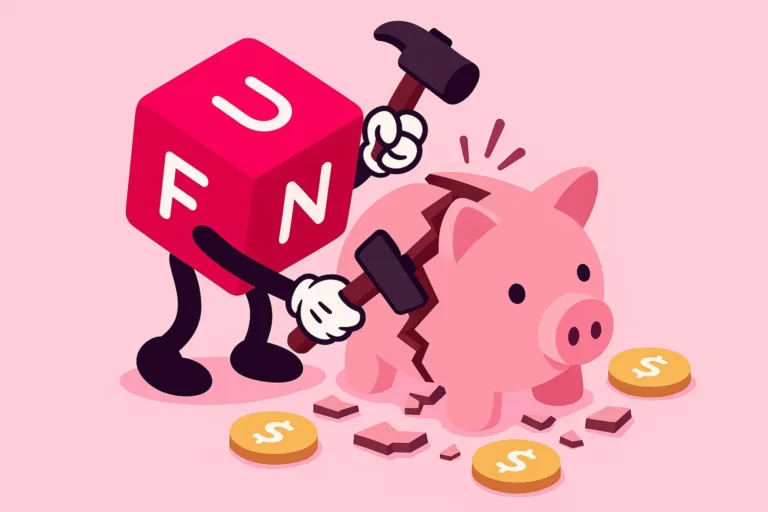From $1 to $64K: 10 Dramatic Moments That Shaped Bitcoin’s Story
If you’ve been around the crypto scene for a while, you probably already know one thing about Bitcoin: it lives for drama.
Since it was born in 2009, Bitcoin has acted like the digital world’s rockstar — one day making people insanely rich, the next day sending them into a panic spiral.
But let’s be honest, that extreme volatility? That’s part of what makes Bitcoin so addictive for traders and speculators.
This article takes you through 10 of the most insane, chaotic, unforgettable moments in Bitcoin’s price history — the wild spikes, the gut-wrenching crashes, and the legendary recoveries.
Quick Takeaways: Before the Deep Dive
Hide-
Price Once Fell to Almost Zero: In 2011, a massive hack dropped Bitcoin’s price by 99.9%.
-
All-Time Highs? Been There, Done That: Bitcoin smashed ATH records at US$1K (2013), US$20K (2017), and over US$40K in early 2021.
-
Regulatory Crashes Are Real: From the Mt. Gox meltdown (2014) to China’s crypto ban (2021), regulation has wrecked BTC’s price more than once.
-
Bounce-Back King: No matter how deep the crash, Bitcoin always finds a way to rise again.
Buckle up, because this ride is anything but boring.
1. February 9, 2011: When Bitcoin Hit US$1 for the First Time
This moment was iconic. Bitcoin went from being this nerdy side project in cypherpunk forums to hitting its first real milestone: US$1. It was more than just a number — it meant Bitcoin was finally being taken seriously.
Think about it: from less than a cent in 2009 to a dollar in under two years. That’s the kind of price leap that lights a fire in speculators’ eyes. And honestly, it marked the birth of the BTC roller coaster we all know today.
2. June 2011: The Mt. Gox Hack — A 99.9% Crash
This one hurt. Imagine buying Bitcoin at US$32, only to watch it freefall to US$0.01 within hours. The culprit? Mt. Gox — then the largest Bitcoin exchange — got hacked. Trust in Bitcoin took a massive hit.
But here’s the wild part: even in the chaos, the crypto community started getting stronger. Instead of giving up, people doubled down. And from this disaster, the idea that “Bitcoin is antifragile” started gaining traction.
3. April 2013: Pump to US$100, Panic Sell, Then a Rocket to US$228
Early April 2013, Bitcoin was on fire. It spiked from around US$68 to US$100 — but markets got jittery. A sudden panic sell dragged it back down… only for it to rebound harder to US$228 in the same week.
This was textbook Bitcoin volatility — fast, brutal, and addictive. If you weren’t addicted to the charts yet, this week probably sealed the deal.
4. November 20, 2013: The First Time BTC Hit US$1,000
November 2013 was a psychological turning point. Bitcoin hit US$1,000 for the first time ever. And the media?
They couldn’t stop talking about it. Suddenly, it wasn’t just tech nerds — institutions were starting to pay attention too.
Why did it happen? More use cases, more media buzz, and growing belief that BTC might actually be a legit digital currency. This was the moment Bitcoin started leveling up in the public’s mind.
5. February 2014: Another Mt. Gox Nightmare — BTC Crashes 60%
And just like that… boom, another Mt. Gox disaster. In Feb 2014, it was revealed that 850,000 BTC had been stolen from the exchange — a breach that had been happening for years.
Bitcoin’s price dropped from US$850 to US$350 overnight. It wasn’t just a financial hit, it was a crisis of trust. But somehow, the ecosystem didn’t collapse. Bitcoin took the hit — and kept going.
6. December 2017: ATH at US$19,783 — The First FOMO Tsunami
This was peak Bitcoin mania. In December 2017, Bitcoin skyrocketed from US$10,000 to US$19,783. Media hype was off the charts. Retail investors were piling in. Everyone and their cousin was talking crypto.
The hype was fueled by the launch of BTC futures on the Chicago Mercantile Exchange (CME). But of course, what goes up… can come crashing down.
Many latecomers bought the top, only to ride the brutal 2018 bear market all the way down.
7. March 12, 2020: Black Thursday — From US$8,901 to Below US$4,000
This day? Pure chaos. As COVID-19 fears gripped the globe, markets everywhere collapsed — and Bitcoin was no exception. From US$8,901, BTC nosedived to US$6,206 and even dipped under US$4,000 in a single day.
People panicked, thought Bitcoin might be over. But nope — this was just the beginning of the next bull run. The pandemic actually helped accelerate Bitcoin adoption, as people searched for alternative stores of value.
8. Early January 2021: Bitcoin Hits US$34,000 — Then Drops 17%
Welcome to 2021. Bitcoin came in hot. On January 3rd, it broke through US$34,792… and the next day? It dropped to US$28,900.
The speed was dizzying — but this pattern was classic BTC. Huge gains, sharp corrections. What made this one different was that institutions were now in the mix. Tesla, Square, and big players started holding BTC on their balance sheets.
9. April 2021: Mini-Crash from a US$64K Peak
Between April 14–23, Bitcoin slid from its all-time high of US$64,000 to US$49,000. A 23% drop in less than 10 days. Yikes.
This correction came after months of hype post-halving and bullish headlines. But old-school crypto heads knew the drill — this was just a breather, not the end. Still, it was a reminder: the crypto market always humbles you when you least expect it.
10. May 2021: China Bans Crypto — BTC Dives 31% in 2 Days
On May 18, 2021, China dropped a bombshell: banning financial institutions from supporting crypto transactions and cracking down on mining. The result? Bitcoin crashed from US$43,000 to US$30,000 — fast.
This wasn’t China’s first crackdown, but it was one of the most impactful. Ironically though, the ban led to greater decentralization. Miners fled China, spreading the network globally and making it even more resilient.
Final Thoughts: Bitcoin’s Survival Is the Story
Bitcoin is the ultimate comeback kid. It can go up 10x in a year, then crash 80% the next — and still bounce back like nothing happened.
It’s not just about price action. Bitcoin represents a bigger movement: decentralized finance, financial freedom, and building without permission.
And these wild moments? They’re more than just hype — they’re lessons in psychology, risk management, and innovation.
Bitcoin isn’t for everyone. But for those who can handle its rhythm, it’s not just an asset — it’s a revolution in motion.
Frequently Asked Questions (FAQs)
Why is Bitcoin so volatile?
Because it’s driven by emotion, hype, regulation, news cycles, hacks, and speculative FOMO. It’s still a relatively young asset in price discovery mode.
How can investors protect themselves from major crashes?
Diversify. Use stop-losses. Only invest what you can afford to lose. Have a strategy — and stick to it.
Will Bitcoin crash again in the future?
History says: probably. It’s part of the game. But with each crash, the market gets a bit smarter.
When was Bitcoin at its most stable?
Between 2015–2016, when the tech was maturing and adoption was growing steadily, without too much hype.
Do halving events always lead to price booms?
Not always, but they’ve often been followed by big bull runs. Halvings reduce supply, but price still depends on demand and market sentiment.







